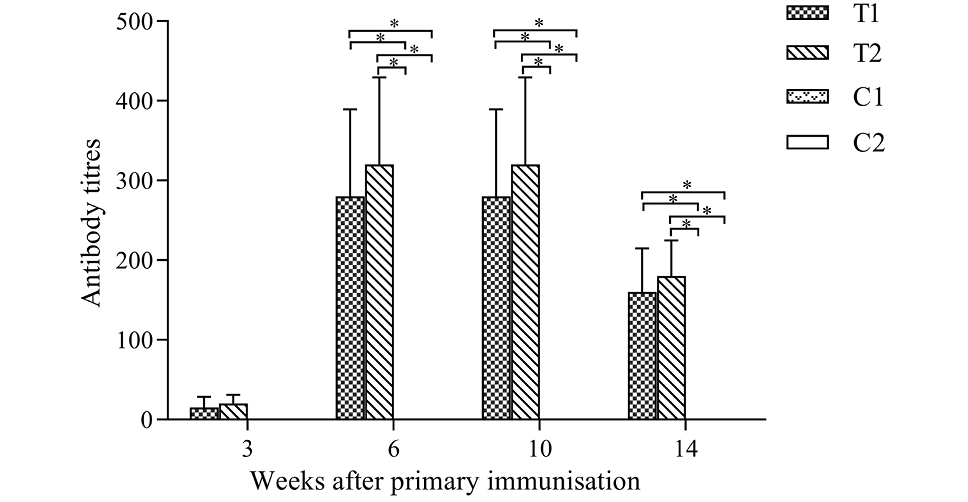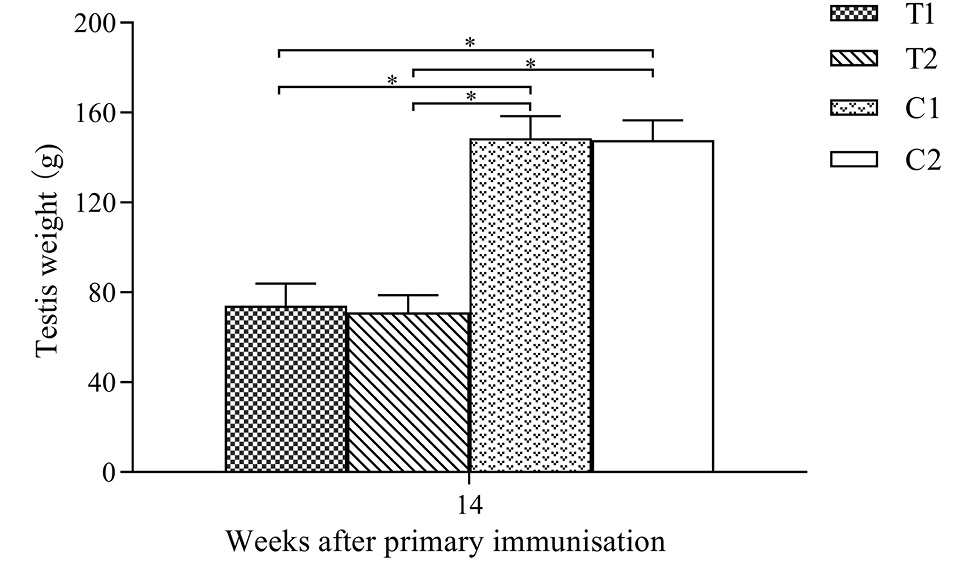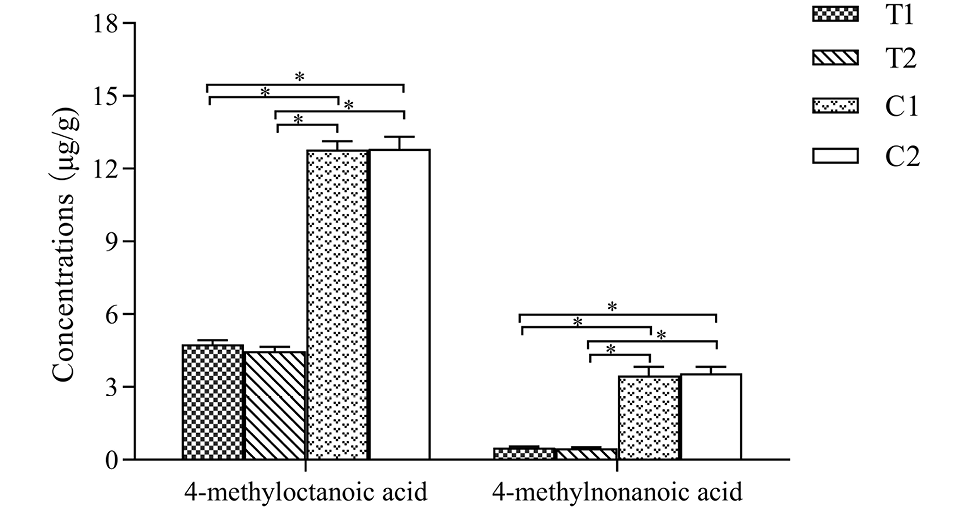Effects of Novel Oral and Plasmid-Injected KISS1 DNA Vaccines on Immunocastration and in Inhibiting Mutton Odour of Male Goats
Effects of Novel Oral and Plasmid-Injected KISS1 DNA Vaccines on Immunocastration and in Inhibiting Mutton Odour of Male Goats
Yan-Guo Han, Jia-Yuan Wu, Ri-Su Na, Wei-Jiang Si, Yu-Qin Han, Yan Zeng, Yong-Ju Zhao and Yong-Fu Huang*
Anti-kisspeptin antibody titre in male goats. Anti-kisspeptin IgG antibody levels in the oral and plasmid-injected KISS1 DNA vaccine groups (groups T1 and T2) and empty vector groups (groups C1 and C2) were detected at weeks 3, 6, 10 and 14 after primary immunisation. Data are presented as mean ± SD; *P < 0.05.
Serum testosterone concentrations (ng/ml) in male goats. Serum testosterone concentrations in oral and plasmid-injected KISS1 DNA vaccine groups (groups T1 and T2) and empty vector groups (groups C1 and C2) were detected at weeks 0, 3, 6, 10 and 14 after primary immunisation. Data are presented as mean ± SD; *P < 0.05.
Scrotal circumference (cm) in male goats. Scrotal circumference in oral and plasmid-injected KISS1 DNA vaccine groups (groups T1 and T2) and empty vector groups (groups C1 and C2) were detected at weeks 0, 3, 6, 10 and 14 after primary immunisation. Data are presented as mean ± SD; *P < 0.05.
Testis weight (g) in male goats. The testis weights in oral and plasmid-injected KISS1 DNA vaccine groups (groups T1 and T2) and the empty vector groups (groups C1 and C2) were detected at week 14 after primary immunisation after slaughter. Data are presented as mean ± SD; *P < 0.05.
4-methyloctanoic acid and 4-methylnonanoic acid concentrations (μg/g) in waist subcutaneous adipose tissue of male goats. The concentrations of 4-methyloctanoic acid and 4-methylnonanoic acid in oral and plasmid-injected KISS1 DNA vaccine groups (groups T1 and T2) and empty vector groups (groups C1 and C2) were detected at week 14 after primary immunisation after slaughter. Data are presented as mean ± SD.















